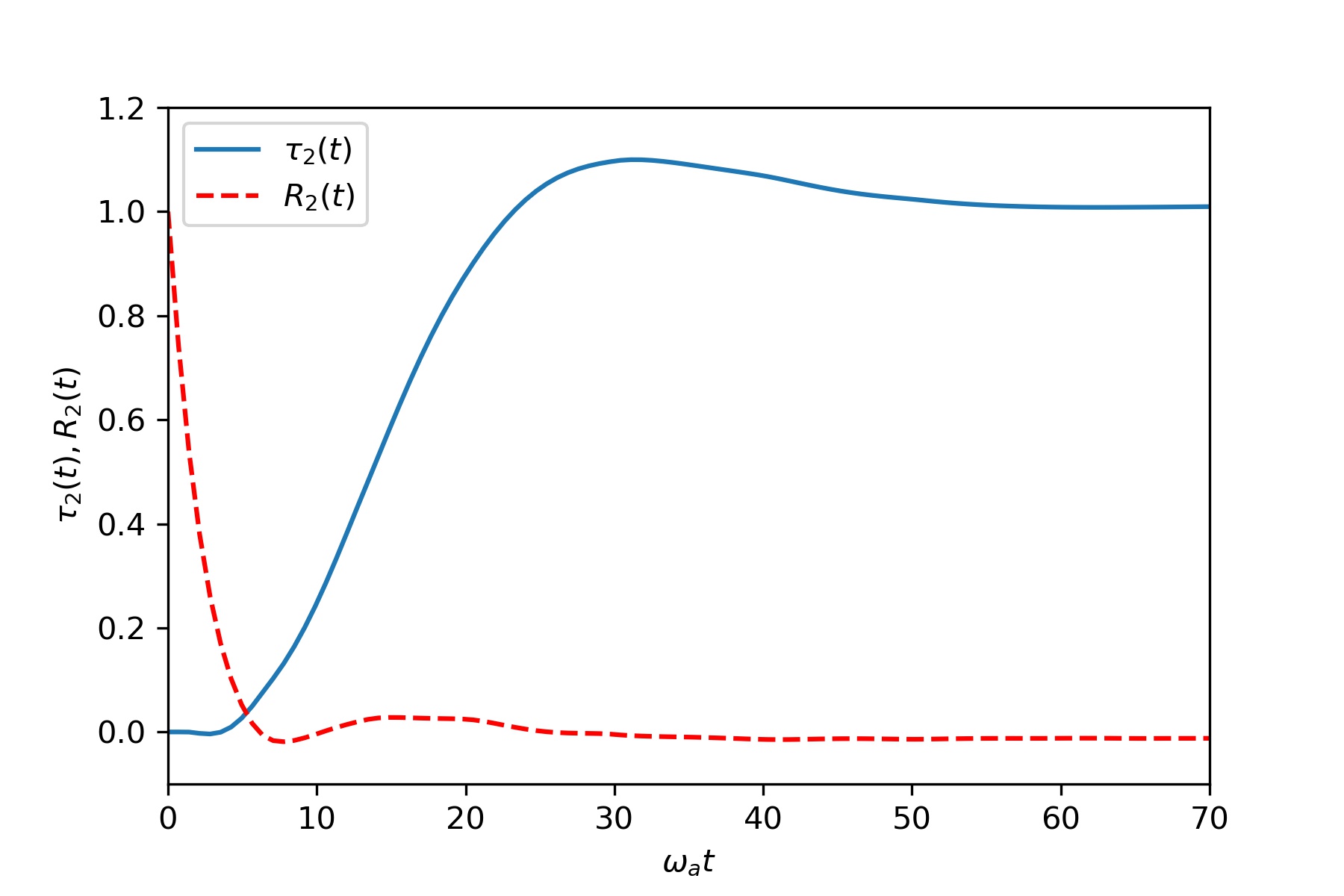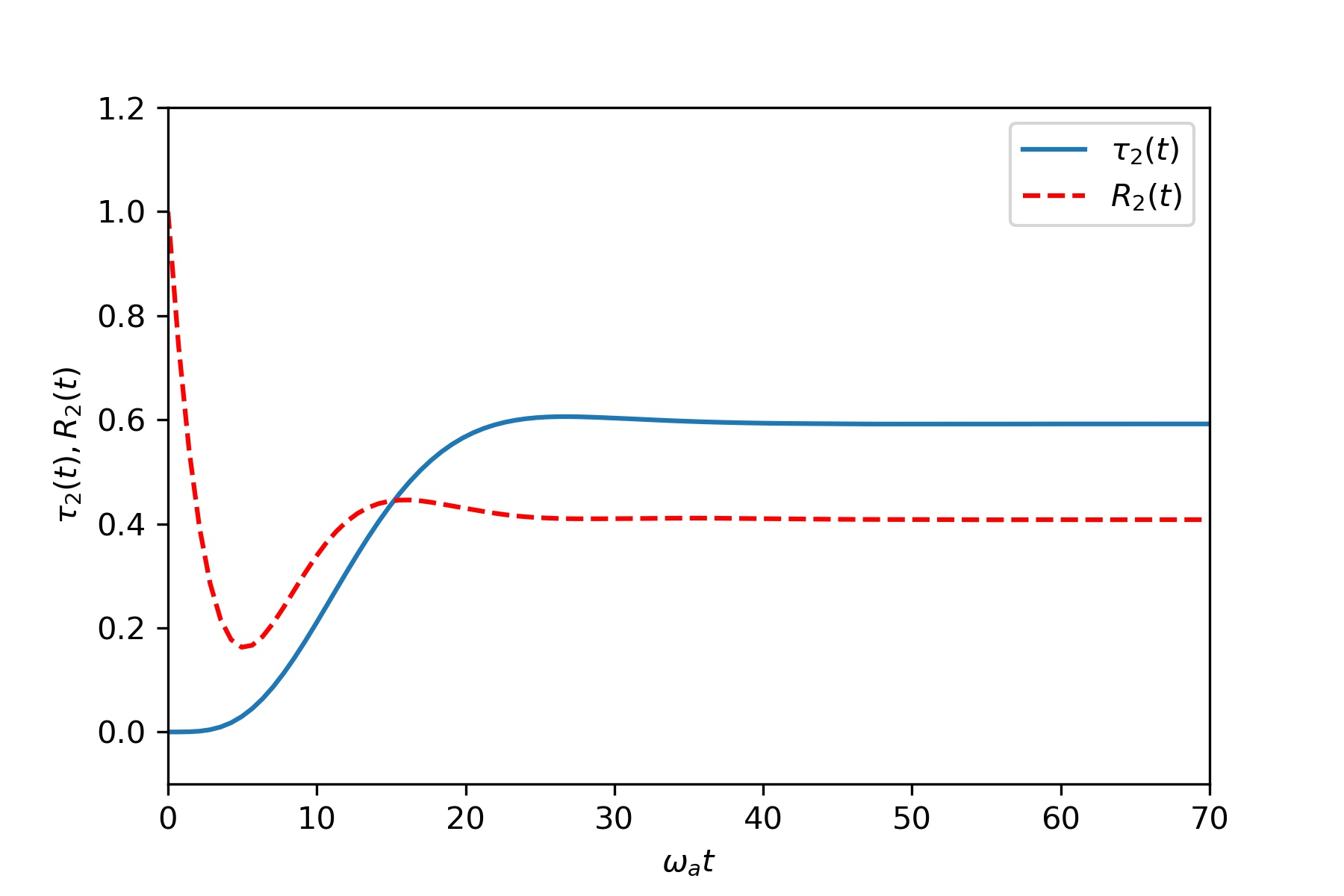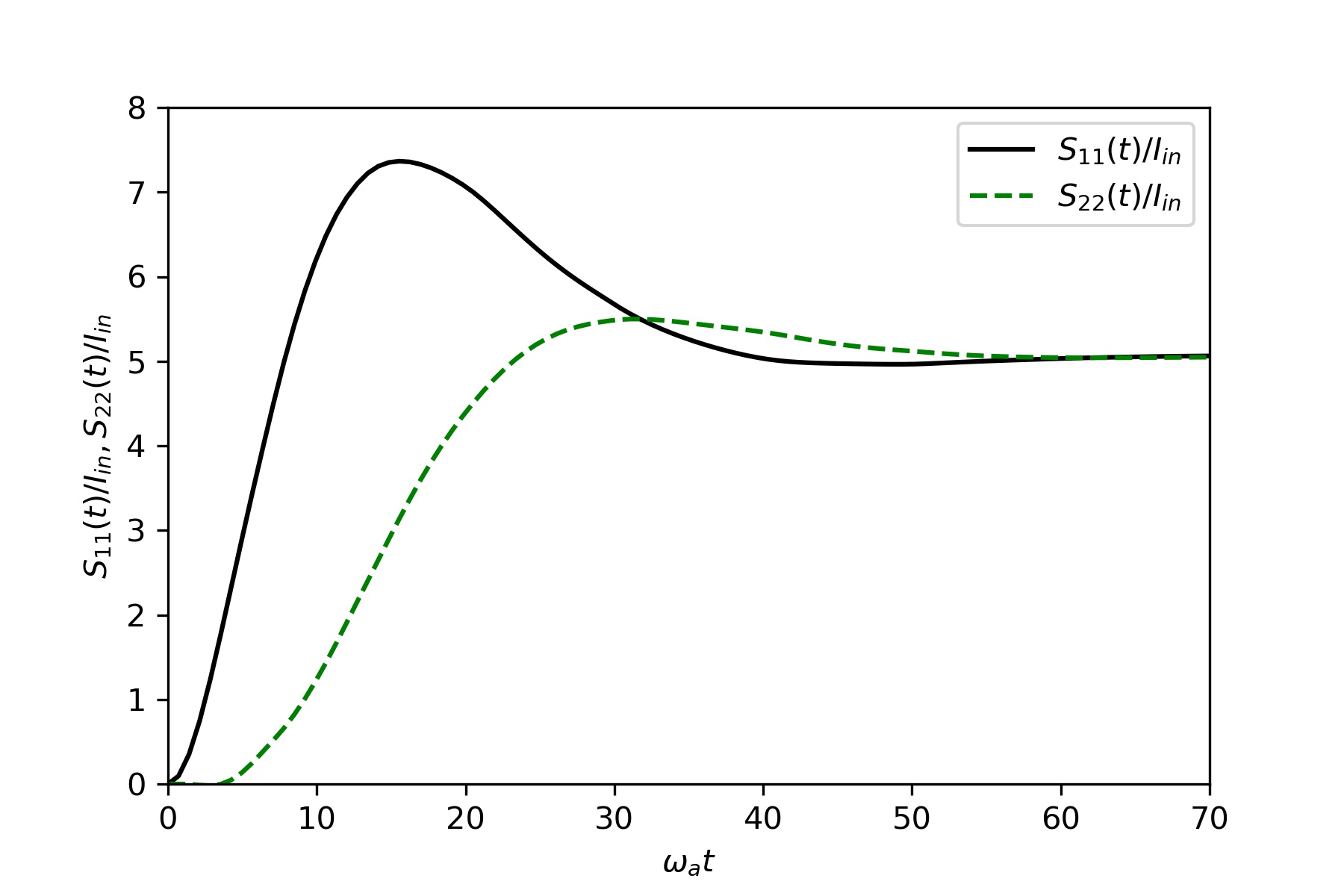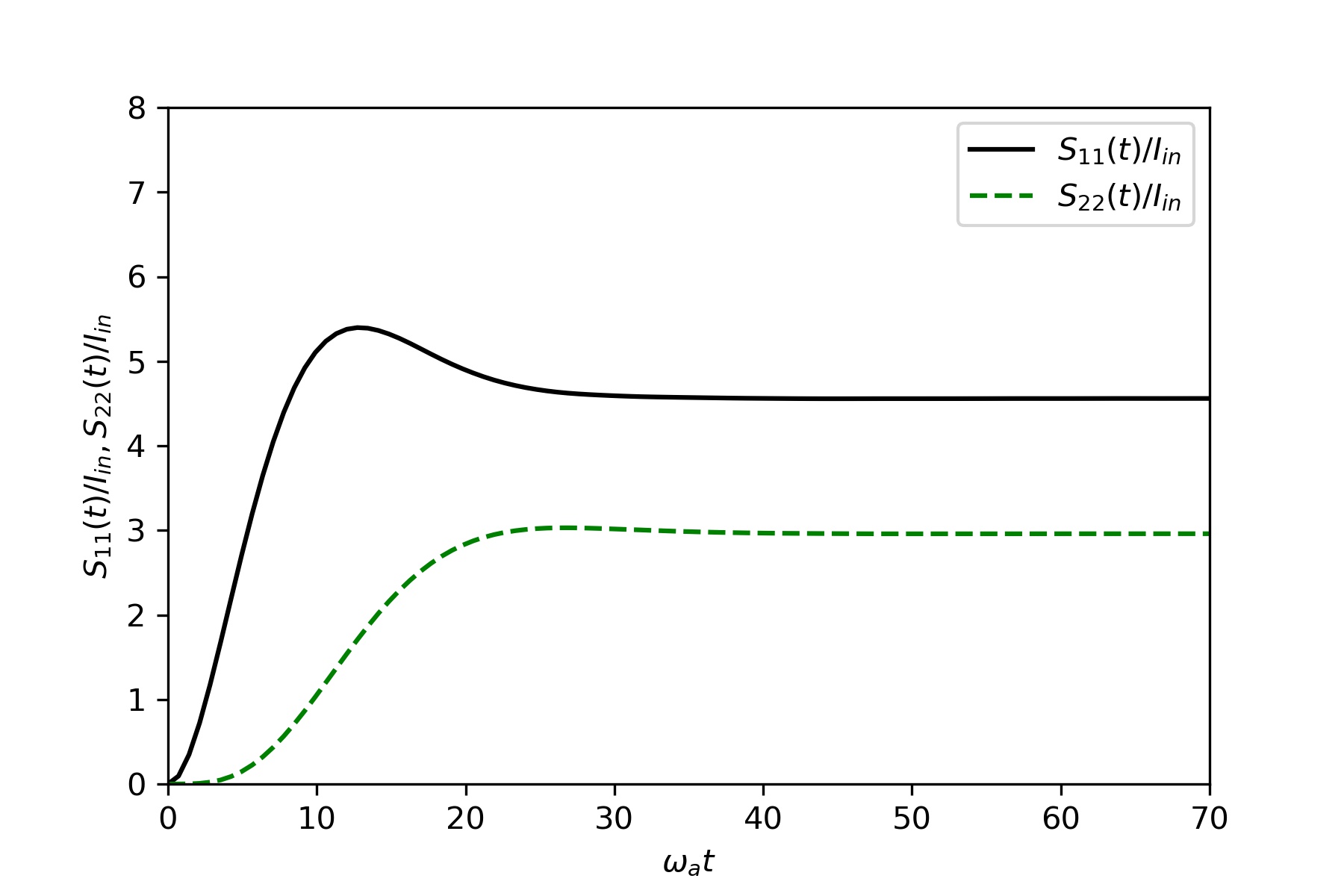



We write Quantum Langevin Equation corresponding to the system and use these to describe the system properties. We first apply the QLE approach to an atomic medium of two-atoms modeled as a Heisenberg-type interacting spin- 1/2 chain with nearest-neighbor coupling. The total Hamiltonian consisting of the atomic medium of two atoms(1),the photon baths(2,3), and the atom-photon coupling(4,5) terms is : $$H_T = H_M + H_{LB} + H_{RB} + \nu _{LM} + \nu_{RM}$$ $$H_M = 2 J_x \sigma_1 \sigma_2^{\dagger} + 2 J_x \sigma_1^{\dagger} \sigma_2 + 4J_z \sigma_1^{\dagger}\sigma_1 + \omega_1 \sigma_1^{\dagger}\sigma_1 + \omega_2 \sigma_2^{\dagger} \sigma_2 -----------(1) $$ $\sigma_i^{\dagger} \& \sigma_i $ are the raising and lowering operators of the $i$th two-level atom. $$ H_{LB} = \int _{-\infty}^{\infty} \omega_k a_k^{\dagger}a_k dk -----------(2)$$ $$ H_{RB} = \int _{-\infty}^{\infty} \omega_k b_k^{\dagger}b_k dk -----------(3)$$
$a_k^{\dagger},b_k^{\dagger}$ create a photon with wave number $k$, respectively, at left \&right side photon baths
$$H_{LM} = \int _{-\infty}^{\infty} g_L (a_k^{\dagger}\sigma_1 + \sigma_1^{\dagger}a_k) dk ---------(4) $$ $$H_{RM} = \int _{-\infty}^{\infty} g_R (b_k^{\dagger}\sigma_N + \sigma_N^{\dagger}b_k) dk ---------(5) $$ The atom-photon coupling strength at left and right sides of the medium are $g_L$ and $g_R$ respectively.
We are here interested in getting total transmitted and reflected power which in turn would give transmission and reflection coefficients of light.
The time-dependent transmission and reflection coefficients for an incoming light from the left of the medium.
The time-dependent transmission cocfficients :
$$T(t) = \frac{2\Gamma_R}{\nu_g I_{in}} S_{22}(t)$$
The time-dependent reflection coefficients :
$$R(t) = 1 + \frac{2\Omega_L}{\nu_g I_{in}}+ \frac{2\Gamma _L}{\nu_g I_{in}} S_{11}(t)$$
Transient properties of the scattered light and the atoms in a medium of
two atoms driven by a laser light. Figure (1,2) depict time-evolution of
transmission coefficient $\tau(t)$ and reflection coefficient $R(t)$ of a laser
light from the left of the medium modeled as an interacting spin chain.
Figure (3,4) depict time evolution of excited atoms scaled by power of
the incident laser.
The common parameters are
$\omega_1 = \omega_2 = \omega_p = \omega_a, J_x = J_z = 0.05 \omega_a , \Gamma _ L = \Gamma _ R = 0.1 \omega_a $
$I_{in} $ is in units of $\frac{\omega_a}{\nu_g}$




Linear and nonlinear laser transmission through an atomic medium of
two atoms modeled as an interacting spin chain.The steady state
transmission coefficient $\tau_2(t = \infty)$ vs scaled frequency $\frac{\omega_p}{\omega_a}$, of the laser
for various intensities ($I_{in} \propto E_p ^2$) of the incident laser.
In all the plots $\Gamma_L = \Gamma _R = 0.1, J_z, = 0.05.$ The rates $\Gamma_L,\Gamma_R,J_x,J_z$ and
$\omega_1, \omega_2$ are in units of $\omega_a$, and $I_{in}$ is in units of $\frac{\omega}{\nu_g}$.




References :
Light propagation through one-dimensional interacting open quantum systems
Pooja Manasi and Dibyendu Roy
Phys. Rev. A 98, 023802